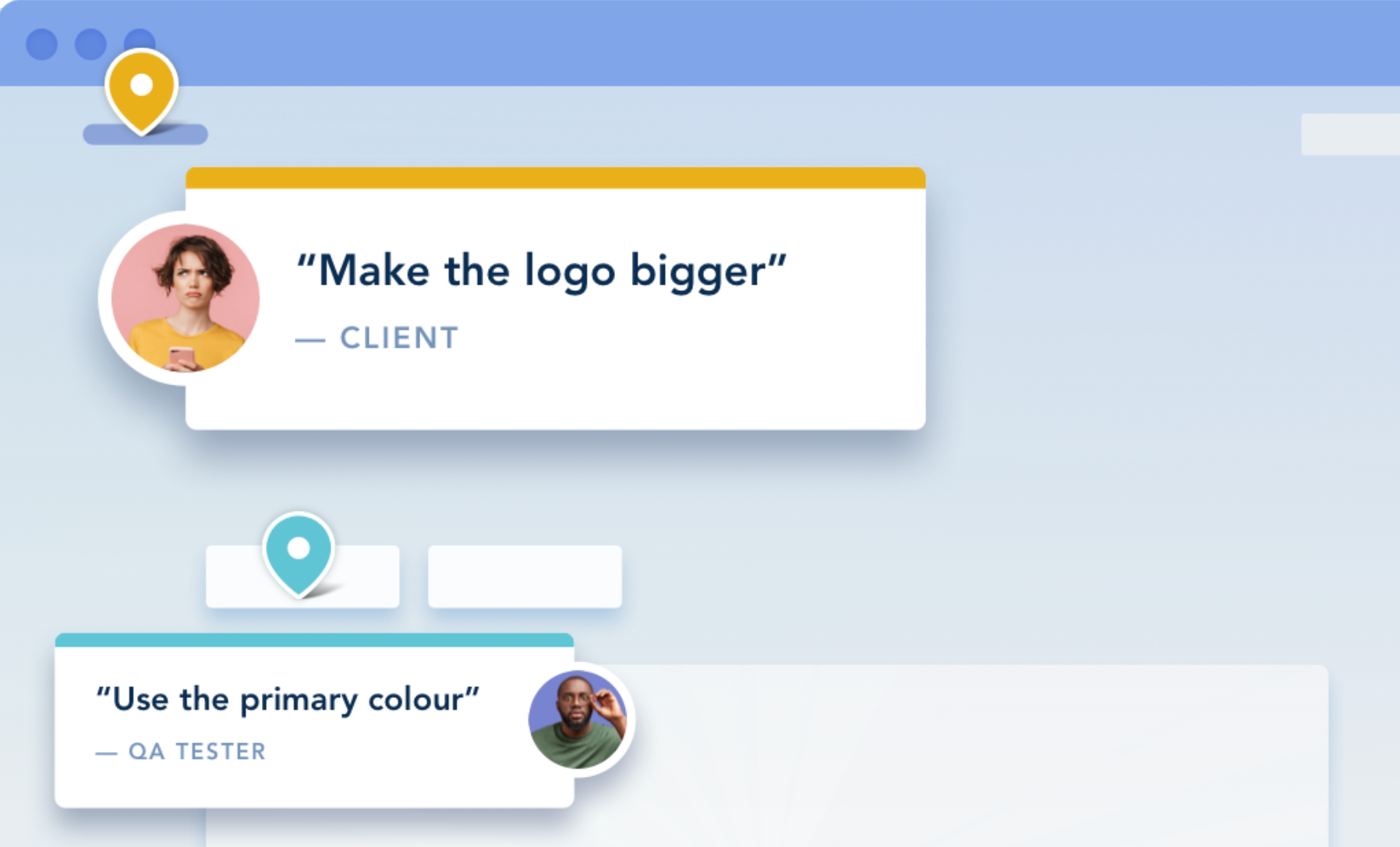As a web development agency, you know exactly what it takes to build a client a fantastic new website. But as time ticks by, even the most incredible website ever has the potential to become outdated and stale.
Many clients do content revamps from time to time, but what some of them need to do is a complete revamp of how their website looks, functions, and engages with their audience. For web developers, a website revamp for a client requires a different approach than building one from scratch.
Are you juggling client requests for revamps?
Or seeking out new clients that you’ve identified as needing a website overhaul?
Here’s our complete website revamp checklist for agencies so that web developers and designers don’t miss a beat.
Contents:
1. When Should a Client Revamp a Website?
2. The Web Dev Agency Checklist: 11 Steps for a Successful Website Revamp
When Should a Client Revamp a Website?
There are all sorts of reasons why a client may want to (or need to) revamp their site.
Clients may need a site revamp if their website is:
- Lacking core web vitals
- Difficult to navigate
- Visually outdated
- Not providing a good user experience
- Not optimized for mobile devices
- Displaying images and content that don’t align with current business goals or the current brand identity
Clients often revamp their websites when it’s time for a rebrand, but sometimes they need a revamp simply to improve functionality and usability.
Some clients may dig deep and identify the issues plaguing their website themselves, but many will rely on web developers and designers to identify the problem for them.
No matter how minor or how extensive the revamp will be, agencies must maintain strong communication with clients throughout the process.
At the start of the project, have a conversation with the client about what the website issues are. Lay out all of the fixes and changes you intend to make to deliver them a revamped site that will help take their business to the next level.
The Web Dev Agency Checklist: 11 Steps for a Successful Website Revamp
From the initial conversation of “Hey, can you revamp my site?” to the day your expert developers launch it online, here is your complete checklist for a successful site revamp.
1. Collect Feedback
The first step in revamping a website is to collect feedback. Agencies should gather feedback from both the client and their internal team. Relying on feedback from the client and UX/UI pros will help you identify every element of the site that needs improving.
Clients might collect customer feedback in a variety of different ways:
- CSATs (customer satisfaction surveys)
- Polls
- Emails
- Feedback widgets
- Usability tests
- Customer reviews
An easy way for an agency to collect feedback from their internal team is with an easy-to-use website annotation tool called BugHerd.
BugHerd is a bug tracking and feedback collection tool that allows users to attach feedback in digital “sticky note” form to any page element. It’s a simple and effective way to share feedback and comments with web developers, web designers, clients, and other members of the internal team.
BugHerd offers a 14-day free trial for new users, so you can start using it in a few minutes.
2. Audit the Current Website
No matter how skilled your client may be at analyzing Google Analytics reports, that doesn’t mean they’ve fully identified the problems with their site.
Dev agencies can perform in-depth analyses much further into the current site’s metrics. From bounce and conversion rates to the amount of time users spend on the site, agencies are better equipped than clients to determine where the existing website needs fixing.
Put a team in place to evaluate the current website performance and determine what elements need major fixing, minor changes, or sweeping updates.
That team should include a web designer and a web developer. It may also include an SEO strategist, data analyst, or even a content specialist.
3. Analyze Competitor Websites

In order to devise a new design for a client’s website, encourage the client to study their competition and analyze the sites of competitors and leaders in their industry. This can help them find inspiration and identify what might be missing from their own site.
Keep in mind that some clients might overlook essential design elements of competing websites. For example, if a client’s website doesn’t include video but all of their competitors’ websites do, adding videos can help to create a better, more competitive user experience.
Developers should also analyze competitor websites to provide clients with more options and ideas.
4. Gather a List of Goals From the Client
The only way to meet and exceed client goals is to know what those goals are, so be sure to ask your client what they want their revamped website to do.
The client may need you to:
- Improve the back end so that the site loads faster
- Revamp all the visuals and images to better align with new brand goals
- Add a blog to improve their search engine optimization strategy
- Add interactive components
The list goes on and on …
Some clients may have one specific goal to achieve or a combination of several goals, so knowing their desired outcome ahead of time is the best way to manage client expectations.
5. Set a Timeline
At the start of the project, establish a target date for when the new site will launch.
Ensure that everyone on the revamp team can promptly achieve their individual goals so you can deliver the new site to the client on time.
Be sure to build in time to gather client feedback and make the necessary revisions based on that feedback. Expect that most clients will want to change something.
6. Design for a Better User Experience
While specific client goals may vary, all clients essentially have the same North Star: to launch an incredible revamped website that drives more traffic and leads to more conversions. Both of those depend upon the user experience you create.
No matter how deep in the weeds you get with front-end or back-end development, don’t lose sight of the overall user experience.
From making the site load faster to eliminating broken links, every aspect of the revamp contributes to the user experience in its own way. Rely on your internal team to provide feedback throughout the process to ensure that the final result is a website that will blow your client away.
7. Build a New Sitemap
Part of the revamp process includes building a new HTML sitemap for users and a new XML sitemap designed for search engines.
But before you do, share your insights regarding the current website with your client. Identify for your clients which existing pages are being viewed and which aren’t being visited.
This information may steer them towards or away from creating certain types of pages going forward, which can help them create their revamped content plan. (More on that in a minute).
8. Get a Brand Style Guide/Visual Guide From the Client

Before you begin the website redesign process, ask your client to give you an up-to-date brand style guide that includes everything from the fonts and typeface they want to their color schemes and logos. Brand style guides should include details about written messaging as well as visual messaging.
If your client doesn’t automatically provide both, ask for these important details before starting the site revamp.
9. Ask the Client for Revamped Content
Some clients revamp web content all the time, but some rarely do.
Web dev agencies aren’t necessarily responsible for creating website content. But you do need to know what the client’s digital marketing content strategy will be so that you can revamp the site around the content strategy and its intended target audience.
Encourage your clients to consider updating old content, creating more relevant content, or replacing old content with brand-new content optimized for SEO.
A revamped website with stale, old content is not the way to increase traffic.
Let your clients know that developing new content with buyer personas in mind will only increase the success of their newly revamped site.
It’s also important to let clients know that some of their existing content might be worth leaving alone, like pages that:
- get a lot of traffic.
- are already ranking for keywords.
- have backlinks.
- are frequently shared on social media.
When keeping existing pages from the current site, test to ensure they don’t contain broken outbound links or faulty internal links.
10. Optimize for Mobile Devices
Almost 60% of all website traffic is generated through mobile devices, so always revamp a client’s website with responsive design in mind.
If you build websites or create new web pages in WordPress, you can take advantage of the fact that responsive design is built into WordPress … sometimes.
WordPress made responsive default themes available in 2011, but not all themes are created equally. Premium WordPress themes are all mobile responsive, but some of their other themes are not.
Whether you use WordPress, some other type of site builder, or hard-code a site from scratch, do whatever it takes to make it look good and work properly on all screens big and small.
11. Test the New Website Before Launching
From the home page to the contact page to the sitemap, every element of a revamped website design needs to function as intended.
And you know what that means:
Testing!
You might think you’ve completed the web revamp process, but if you haven’t tested it for bugs, there’s more work to do.
We discussed BugHerd earlier as a way to collect feedback at the start of the project, but you can use it throughout various stages and at the end.
When you think your revamp is complete, have key members of your internal team share final feedback with the BugHerd bug tracking tool. Make changes to any bugs that need fixing and then send the finished product to the client.
Clients can provide additional feedback with the BugHerd bug tracker. (It’s so easy to use that even those who aren’t tech-savvy can dive right in). Once all feedback has been addressed, your revamp is complete and it’s time to launch the site.
The end goal for any web dev agency is that the revamped site be better than the previous one. But how you define “better” depends on how the existing site is performing and the client’s expectations.
For some clients, expectations may seem unrealistic. For others, simply optimizing for mobile devices might be all it takes to tickle them pink.
Every client has different needs and wants, so keeping an open line of communication and exchanging feedback and ideas is essential from both ends.
So the next time a client comes to you looking for a website revamp, prepare for many conversations and exchanges about what that will entail. The more you know, the better your revamp will be and the happier the client will be.
And that, as we all know, is the real goal.
Before launch, check out: The Website Launch Checklist To Avoid Sh*t Going Wrong


















But don't just take our word for it.
BugHerd is loved by 10,000+ companies,
350,000+ users across 172 countries.
4.8/5
4.7/5
4.5/5
5/5
8.7/10
Sam Duncan 📱📏 🌱
@SamWPaquet
"@bugherd where have you been all my life??
We just migrated our bug tracking over from Asana and have at least halved our software testing time🪳👏📈. "
Ashley Groenveld
Project Manager
“I use BugHerd all day every day. It has sped up our implementation tenfold.”
Sasha Shevelev
Webcoda Co-founder
"Before Bugherd, clients would try to send screenshots with scribbles we couldn't decipher or dozens of emails with issues we were often unable to recreate."
Mark B
Developer
“A no-brainer purchase for any agency or development team.”
Kate L
Director of Operations
"Vital tool for our digital marketing agency.”
Paul Tegall
Delivery Manager
"Loving BugHerd! It's making collecting feedback from non-tech users so much easier."
Daniel Billingham
Senior Product Designer
“The ideal feedback and collaboration tool that supports the needs of clients, designers, project managers, and developers.”
Chris S
CEO & Creative Director
“Our clients LOVE it”
Emily VonSydow
Web Development Director
“BugHerd probably saves us
at least 3-4hrs per week.”